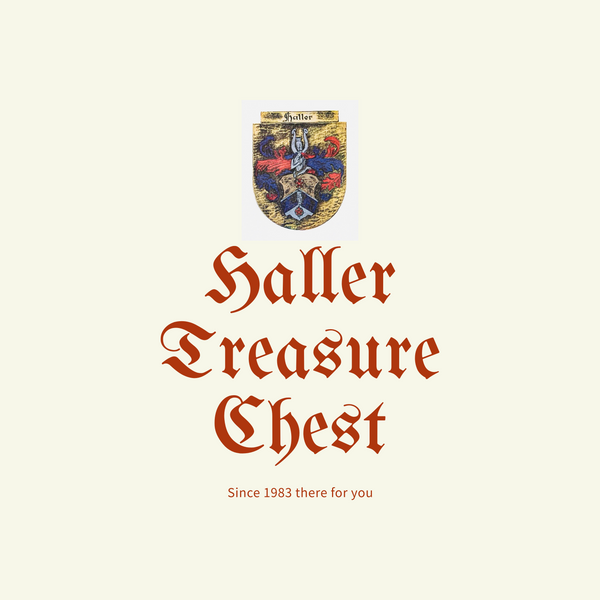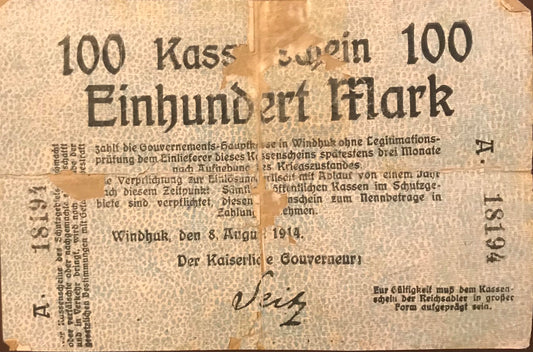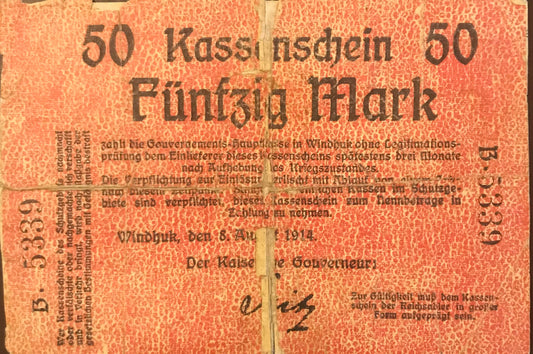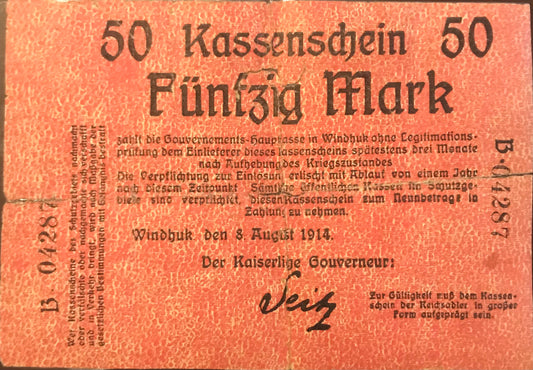Featured collection just for you!
With the outbreak of the First World War, German South West Africa, like the other colonies, was cut off from the mother country and thus also from the supply of cash. The Reich Governor reacted to this cash shortage and had banknotes in mark currency issued as early as the beginning of August (i.e. in the first month of the war). The denominations were 5, 10, 20, 50 and 100 marks. All notes were printed on very thin, soft paper. This also explains why so few notes have survived to this day. All notes bear the facsimile signature of the imperial governor Dr Seitz, which is why the notes are also known as Seitz notes.
After the complete occupation of the colony by the Union of South Africa in 1915, British currency was introduced. The imperial currency that had been in circulation until then and the Seitz notes were declared invalid due to the completely unprepared currency changeover. It was hoped that this could be remedied by allowing large companies to issue 10, 25, 50 Pf, 1 Mark, 2 Mark and 3 Mark emergency money. Soon, however, small and micro businesses were also issuing emergency money in paper form. Although the German banks accepted all these emergency money issues as a means of payment, there was so much confusion in payment transactions that the German Chamber of Commerce in Windhoek commissioned the bookshop in Swakopmund to issue emergency money that was valid nationwide. This emergency money then circulated throughout the colony as a valid means of payment .
-
MV043 - Banknote - Seitz Kassenschein - 100 Mark - August 1914 - A. 18194
Vendor:Haller Treasure ChestRegular price CHF 1,250.00Regular priceUnit price / per -
MV041 - Banknote - Seitz Kassenschein - 50 Mark - Aug.1914 - B-5339
Vendor:Haller Treasure ChestRegular price CHF 1,450.00Regular priceUnit price / per -
MV042 - Banknote - Seitz Kassenschein - 50 Mark - August 1914 - B-04287
Vendor:Haller Treasure ChestRegular price CHF 1,575.00Regular priceUnit price / per



